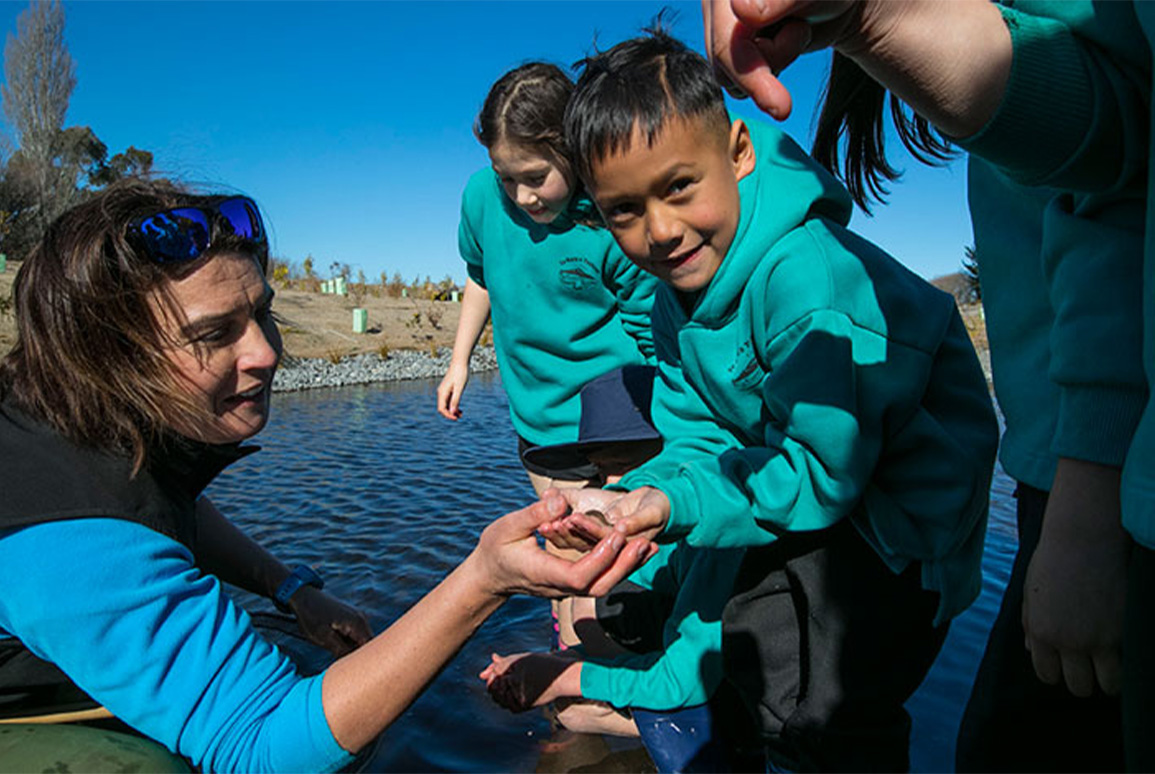Bringing life back to Kā Pūtahi Creek
19 September 2019
A newly constructed section of Kaputone Creek was officially opened and named Kā Pūtahi Creek in August 2016.

As part of the opening celebration, Boffa Miskell ecologist Dr Tanya Blakely assisted the Christchurch City Council (CCC) and Ngāi Tūāhuriri in releasing tuna (eels) and inanga into the new creek, as a symbol of new life. Students from Tuahiwi School helped Tanya release the fish into Kā Pūtahi Creek.
The realignment came about when it was realised that the new Christchurch Northern Corridor alignment would pipe, or culvert, a 250-metre-long section of the creek. The CCC, Ngāi Tūāhuriri, Ngāi Tahu, the Styx Living Laboratory Trust, and Environment Canterbury considered that this would have long-lasting detrimental effects on the aquatic ecology. So, the CCC, in collaboration with the New Zealand Transport Agency, obtained resource consent to realign the affected section of waterway to avoid being culverted. The realigned Kā Pūtahi Creek was designed by CCC, including a range of features essential for healthy aquatic systems, such as pools and riffles, boulders, logs and tree roots, and overhanging banks. The creek margins were planted with a variety of lowland podocarp forest species, reflecting what would have once grown in the area. The realigned creek and riparian plantings will create conditions for both terrestrial and freshwater fauna to thrive.
As part of this wider creek realignment project, the CCC commissioned Boffa Miskell to conduct an ecological survey assessing the baseline (or before) conditions of Kaputone Creek. It’s important to understand whether restoration and rehabilitation efforts lead to improvements in ecological health, and as such, it is essential to have a clear picture of the systems original condition as a point of comparison. Tanya led the Boffa Miskell ecology team in gathering this baseline data. Four sites were surveyed, two within the reach that was to be realigned, plus one upstream and one downstream site. This detailed survey covered the physical habitat conditions, such as the composition of substrates and amount of sediment on the streambed, general water quality, and the macroinvertebrate (aquatic snails and insects) and fish life present.
Tanya, who led the survey and helped release fish at the official opening, said, “Although the survey showed that the stream was in poor ecological health at all four sites, we did find inanga and tuna / longfin eels throughout the creek. It’s encouraging that this waterway supports these species, which are both of conservation interest and listed as ‘at risk - declining’, despite the poor water quality. The realignment is an excellent outcome for Kā Pūtahi Creek as it provides better habitat for these, and many other, indigenous species.”The Council now has robust information to use for comparison in future monitoring as the creek settles into its new alignment.

